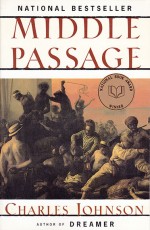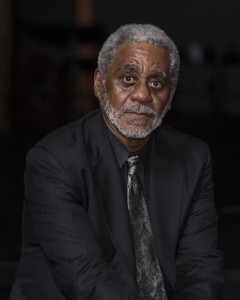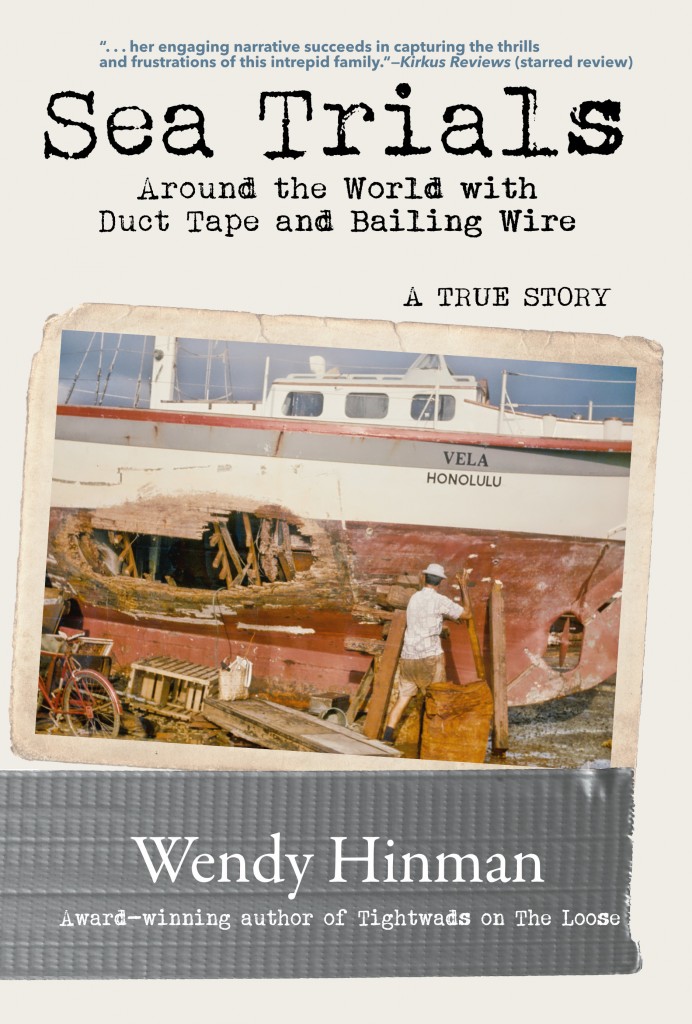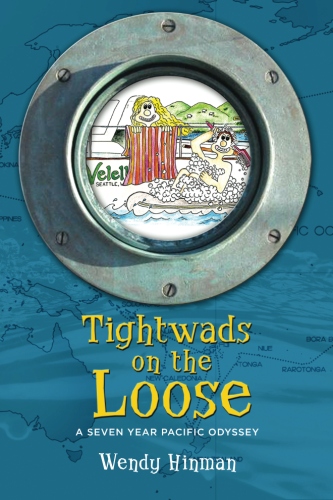Former professor of Creative Writing and National Book Award Winner, Dr. Charles Johnson has an impressive list of achievements. This spring Dr. Johnson’s work is featured with eight other black cartoonists in the anthology It’s Life as I See It: Black Cartoonists in Chicago 1940-1980, and will be in an exhibit accompanying this book at Chicago’s Museum of Contemporary Art in May. He also will be guest editor for a special edition of Chicago Quarterly Review in June—Anthology of Black American Literature.
When the esteemed Dr. Johnson and I were both featured authors in the Libraries Unbound event, I had the chance to talk with him and this evolved into an interview with the Writers Connection. (Don’t miss a single issue. Join our mailing list by visiting www.writersconnection.org.)
Wendy Hinman Interview with National Book Award Winner Dr. Charles Johnson
Dr. Johnson, I first became aware of you and your work when the Rainier Club of Seattle awarded you with Lifetime Achievement recognition back in 2008, shortly after I returned from my sailing voyage. I wanted to interview you ever since, but felt intimidated by all your accomplishments which have only grown since then. At the Libraries Unbound event, I was lucky enough to be one of the featured authors alongside you. I was delighted when you agreed to share your wisdom with our readers. Given the breadth of your body of work, it was a challenge to limit my questions to these.
Questions:
In The Way of the Writer, you convey the extent to which exposure to literature shaped you. No doubt as a professor of Creative Writing, you’ve reinforced how essential reading literature is to the development of a writer. Could you outline for us some of your earliest influences and what inspired your pursuit of writing as a form of expression? What did you find most helpful in your evolution as a writer?
I think a big factor in my creative life is that I was an only child who had to find ways to entertain myself as I was growing up. Drawing was my main passion as a kid. But my mother was an avid book reader, and at times she was in three book clubs as I was. For me, it was a science fiction book club in my teens— I had a first edition of Philip K Dick’s The Man in the High Castle when it was first published, and I’ve always regretted letting it get away from me. Her library also contained an early edition of Richard Wright’s Black Boy and books on yoga and a wide range of subjects.
Something else that reinforced my love of reading was the high school I went to, Evanston Township, which was rated as the number one best public high school in America in the 1960s. It was like a small college, with close to one thousand students, and there I took classes in art and literature, and the only creative writing class I ever enrolled in. That was taught by a wonderful lady named Marie Claire Davis, who I believe was occasionally publishing her work in The Saturday Evening Post at the time. In the 1990s, I set up an award at the high school, the Marie Claire Davis award, for the best creative writing portfolio by a senior student, because Marie was faculty advisor for the literary section of our school newspaper, The Evanstonian. For that school newspaper I drew cartoons and a comic strip that in 1966 received two second-place awards in a national contest for high school cartoonists sponsored by Columbia University’s School of Journalism. During my time in Marie’s class, she took the three stories I wrote in her class and published them. Those stories are reprinted in First Words: Earliest Writing by Favorite Contemporary Authors, edited by Paul Mandelbaum. It’s also significant that I grew up in a college town in the shadow of Northwestern University, which later in the 1990s tried to hire me with an endowed chair in the humanities. At that time, I declined their offer, because the English department at the University of Washington offered me – as a counteroffer to Northwestern’s – the S. Wilson and Grace M. Pollock Endowed Professorship in English.
So reading was a way for me to entertain myself, and occasionally writing stories in my teens was fun. Literature reinforced and fed my imagination for the comic art I was doing. I think it was right after my freshman year in high school that I decided I needed to read one book a week outside of my homework assignments. Some weeks I’d finish early, then read a second book. And eventually a third book. I started with pop fiction, of course, but ended my senior year with Plutarch’s Lives of the Noble Grecians.
 You’ve expressed yourself through so many different formats – illustration, personal and philosophical essays, stories, scripts, novels, children’s stories, etc. When you sit down to work, how do you decide what format is most suitable? When beginning to write, do you begin with an idea, a theme or a character? How do you tease a story from that? What comes next?
You’ve expressed yourself through so many different formats – illustration, personal and philosophical essays, stories, scripts, novels, children’s stories, etc. When you sit down to work, how do you decide what format is most suitable? When beginning to write, do you begin with an idea, a theme or a character? How do you tease a story from that? What comes next?
I always start with an idea. Some ideas are best expressed in the short story form, some in the novel genre, some in a gag single panel cartoon, some in a philosophical or literary essay. I’ve always done screenplays and teleplays as assignments brought to me as a writer-for-hire, so the form has already been decided for me. What one comes to realize after fifty-six years of steadily publishing drawings and stories is that all the creative forms of expression you mentioned are interrelated. People (characters) are at the center of all of them. So having an ongoing and empathetic relationship with people is the basis for every form I’ve worked in. I could do a still life watercolor, sure. But I’d rather draw or write something that lets me discover something about our lives, thoughts, or feelings as human beings, even if it’s a fantastic sci-fi story. By the way, you might enjoy a graphic novel I co-authored with my friend, the prolific Afrofuturist sci-fi writer Stephen Barnes. The title is The Eightfold Path. It consists of eight interlocking stories, all in the style of the old E.C. horror comics of the 1950s, and is sprinkled with some Buddhist themes. The artist for the stories is Bryan Moss, and the book will be published in January 2022, by Megascope, an imprint of Abrams Comic Arts, which is also doing a graphic novel adaptation of my novel Middle Passage, illustrated by the great comic book veteran artist Denys Cowan. That is scheduled for publication in spring, 2023.
You’ve stated “What I want when I read a story or a novel is to laugh, to cry, and to learn something.” What techniques would you suggest learning to help a reader experience themes and subjects viscerally, palpably, and emotionally?
Naturally, one has to feel from the inside every literary form one works with, and every scene one writes, the same way an actor does. To the best of our ability, we have to imaginatively inhabit the heart and mind of every major character we create in a novel or story, even the characters we don’t approve of, like Capt. Ebenezer Falcon in my novel Middle Passage, the slave-catching Soulcather in Oxherding Tale, or my depiction of Martin Luther King Jr., in Dreamer. Developing the skill to do that further humanizes and deepens our hearts as writers. And writing that way has a humanizing effect, too, on our readers. Never treat characters in a one-dimensional way, denying them their humanity and complexity. I used to ask my students to do something often difficult for them: namely to determine what their protagonist fears most in the world. Not snakes or spiders. But their deepest social fear, the one experience they never want to have. And then I asked them to maneuver their character into exactly that situation. That strategy allows us to see a character when he or she is living for high stakes, and how they survive or don’t survive confronting their deepest fears and desires.
Can you share a little about your revision process? How do you know when your work is ready to share with an outside audience?
My ratio of throwaway to keep pages can often be 20 to 1. I do many drafts. For a 250-page novel manuscript, into which I put as much research as I would into a dissertation, I generate around 3,000 pages. I revise sentences and word choices hundreds of times before I show a draft to anyone. Until I can’t change a word without disturbing the sound and sense, the music and meaning of a heavily revised sentence. I explain my process of revision in the chapter titled “On Craft and Revision” in The Way of the Writer: Reflections on the Art and Craft of Storytelling. I also have a shelf full of writer’s workbooks I’ve been filling up since 1972 with entries that cover every subject under the sun: thoughts, dialogue that comes to me, poetry I love, scraps of language that come to me unbidden, images, brief essays to myself, notes on things I read, dialogue that I overhear on the street or in a supermarket, whatever during each day captures my attention as something I’d like to record for future use. In my final stages of doing a story or novel (but never an essay), I carefully go through all of them and I always find something that I can use for an in-progress story. Going through all the workbooks can take me two or three weeks. You can see one of my revised pages—how thoroughly marked up it is—in the interview I did for The Paris Review. (https://www.theparisreview.org/interviews/7146/the-art-of-fiction-no-239-charles-johnson).
To read the rest of the interview, visit www.writersconnection.org. Or click here.
More about Dr. Charles Johnson:
Charles Johnson is a prolific and multi-talented artist. Over a lengthy career as a writer, editor, educator, and scholar, Charles Johnson muses on what it means to be human through a wide variety of formats, including cartoons and illustrations, short stories, fiction and non-fiction books, scripts, and essays. After writing six of what he calls “apprentice novels” between 1970 and 1972, he published the philosophical novel, Faith and the Good Thing in 1974 with Viking Press. In 1976, he was hired to teach at the University of Washington, Seattle. He received early tenure in three years at UW, then early full professorship after another three years, following the publication of his second novel, Oxherding Tale (1982). In total, he has authored twenty-five books: eight works of fiction, three of philosophy, and nine non-fiction works in addition to his illustrated comic art books. anthology It’s Life as I See It: Black Cartoonists in Chicago 1940-1980, and will be in an exhibit accompanying this book at Chicago’s Museum of Contemporary Art in May. His work has garnered significant recognition. Johnson received a MacArthur Fellowship or “Genius Grant” in 1998. He is also the recipient of National Endowment for the Arts and Guggenheim Fellowships, and many other prizes such as a 2002 Academy Award in Literature from the American Academy of Arts and Letters. His novel, Middle Passage (Atheneum, 1990), won the National Book Award in 1990. In 1986, Johnson’s first story collection, The Sorcerer’s Apprentice was short-listed for the PEN/Faulkner, and he was identified in a survey conducted at UCLA as one of the ten best short story writers in America. His short stories have appeared in Best American Short Stories (1982, 1995), O. Henry Prize Stories (1993), Playboy Stories: The Best of Forty Years of Short Fiction (1994), Best Buddhist Writing (2006, 2007, 2008), Best Spiritual Writing (2010), and, like his novels, have been translated into several languages. He has also authored award-winning scripts, written book reviews, and judged literary prizes, including the Pulitzer and National Book Awards, each three times. For 20 years, between 1978 and 1998, he was fiction editor of the Seattle Review. In his recent book, The Way of the Writer: Reflections on the Art and Craft of Storytelling (Simon & Schuster, 2016), he shares lessons gleaned in the course of a lifetime of literary achievement, which he has shared through lectures around the globe. Long a practicing Buddhist, his spirituality is integral to who he is and his philosophy of the interconnectedness of all beings runs throughout his work. Six books have been written about Dr. Johnson including: by Marc Conner and William Nash, Charles Johnson: The Novelist as Philosopher; by Gary Storhoff, Understanding Charles Johnson; and by Linda Ferguson Selzer, Charles Johnson in Context.




